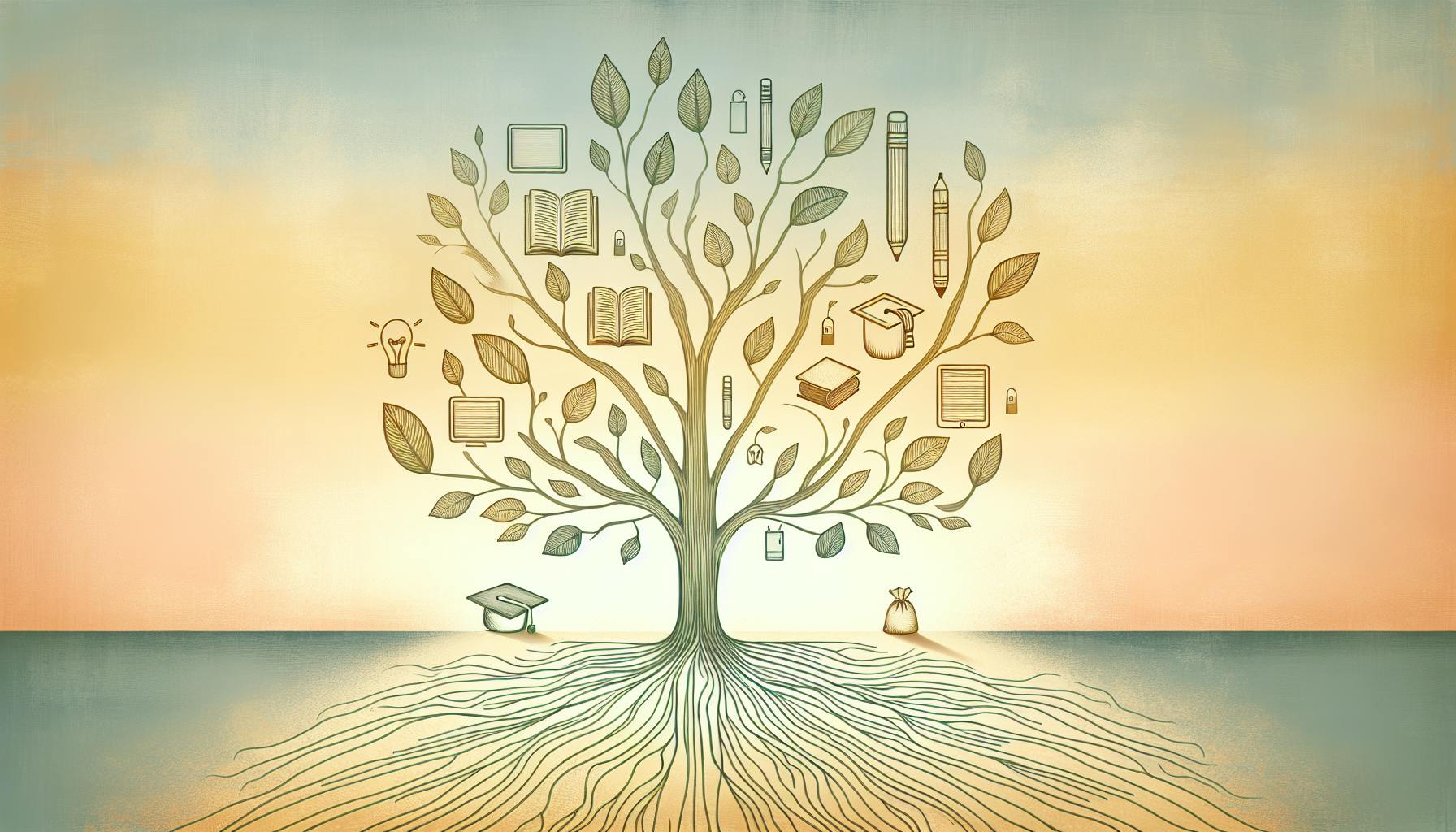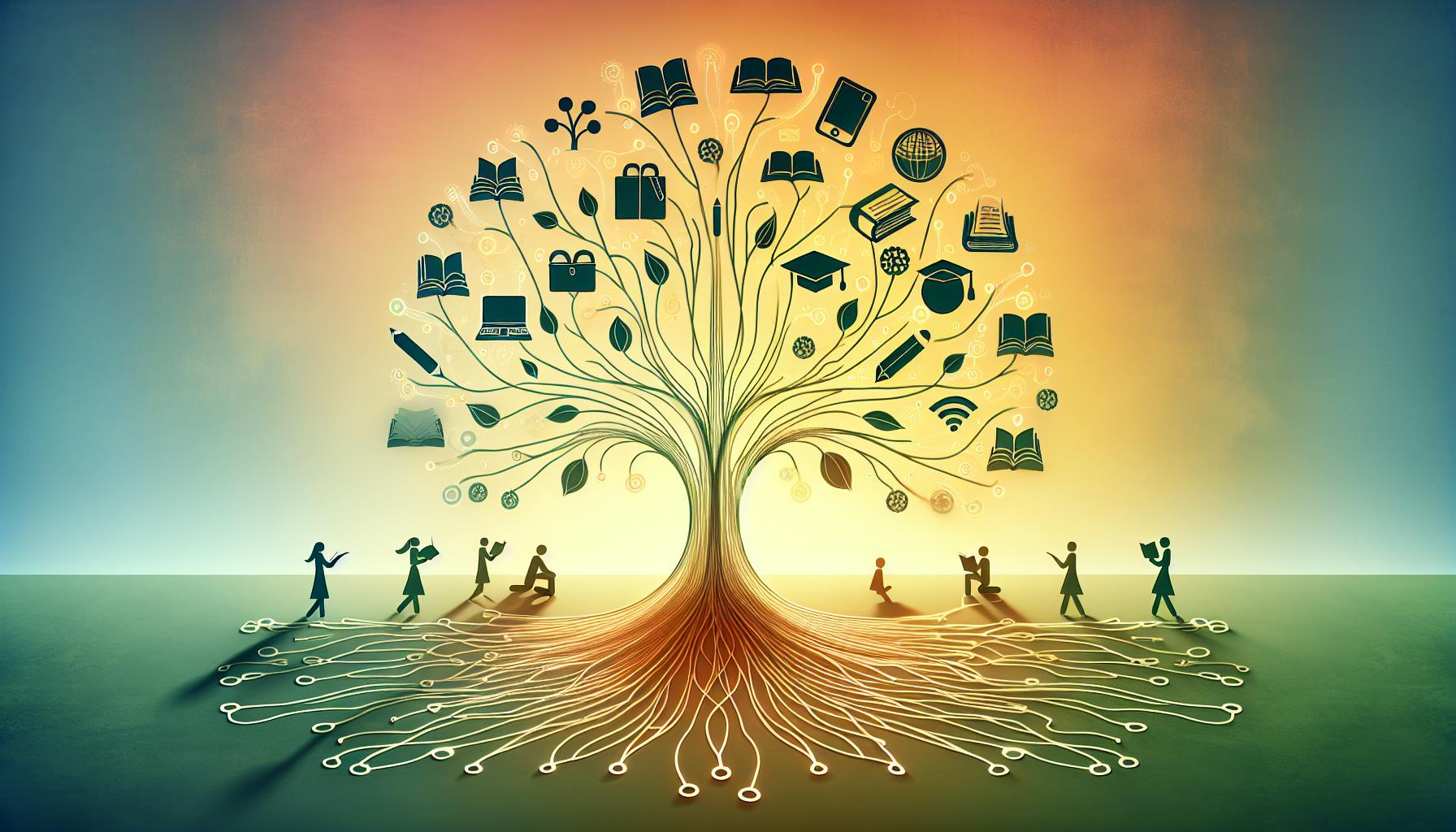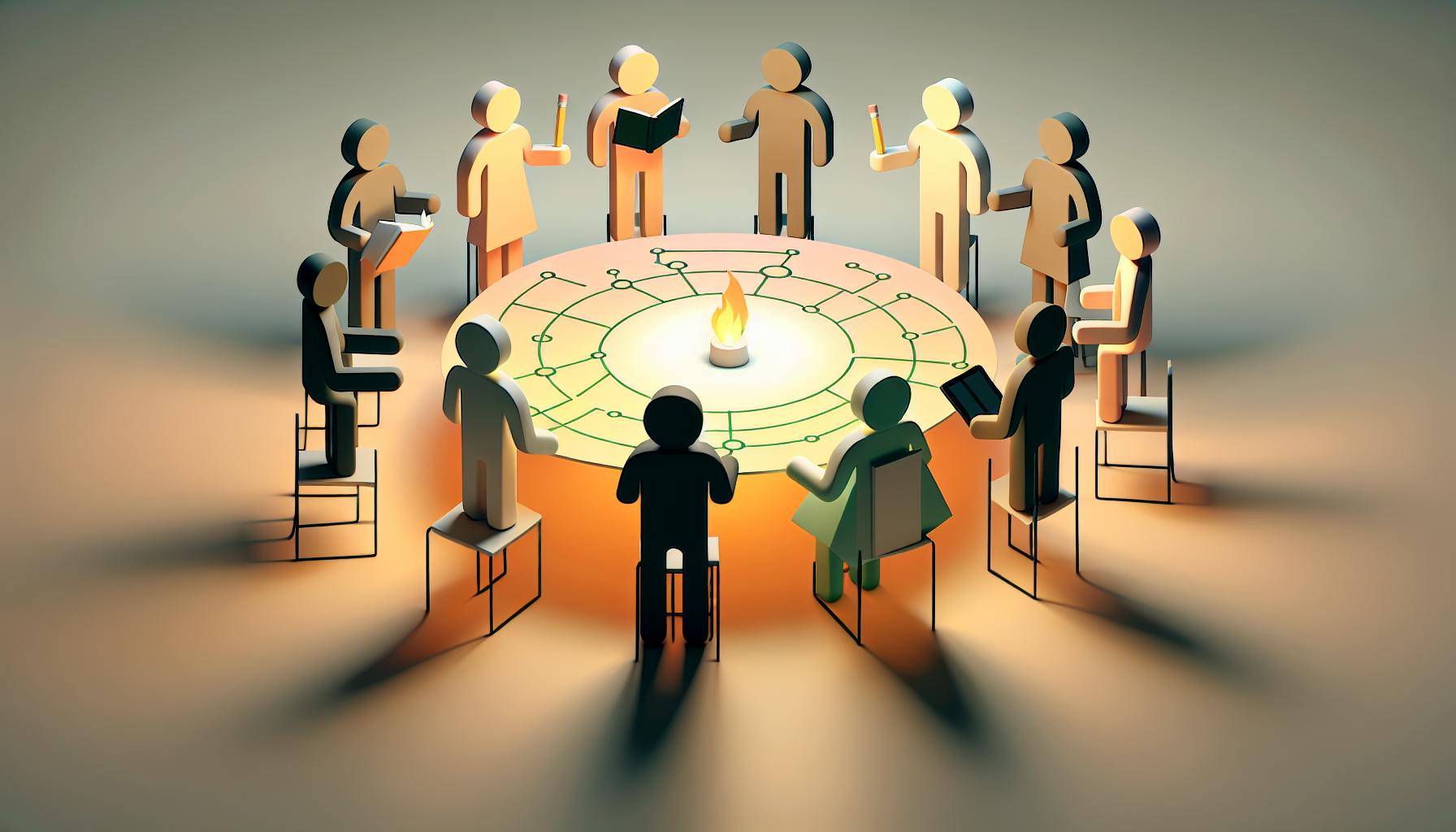Bringing lessons to life in an immersive way can be challenging for educators.
Luckily, virtual reality (VR) offers engaging educational experiences that transport students into new worlds of learning and discovery.
In this post, we'll explore five top virtual reality apps and experiences that are revolutionizing education by making lessons interactive, memorable, and fun.
Introduction to Immersive VR Education
Virtual reality (VR) technology is transforming education by creating immersive simulated environments that boost student engagement. This article explores five VR experiences that bring lessons to life.
Exploring the Impact of Virtual Reality in Education Articles
Virtual reality refers to computer-generated 3D environments that allow users to interact with and become immersed in imagined worlds. Adoption of VR in education is growing as research shows it improves learning outcomes, knowledge retention, and student motivation. Key benefits of VR in education include:
- Enabling virtual field trips to otherwise inaccessible places
- Developing social-emotional skills through role-playing exercises
- Boosting engagement for hands-on learners
VR education platforms like Google Expeditions, Nearpod, and Mondly are making it easier for teachers to integrate VR into lessons across diverse subjects.
Benefits of Using VR in Education and Training
Studies show VR technology in education significantly improves learning performance over traditional teaching methods. Specific benefits include:
- 90% improved knowledge retention compared to lectures and textbooks
- Up to 400% boost in learning productivity
- Development of tech skills needed for the 4th industrial revolution
- Increased student motivation and class participation
By transporting students to imaginative worlds, VR field trips spark curiosity and excitement for learning. Immersive VR training also enables safe practice of high-risk skills without real-world consequences.
Overall, virtual reality creates unforgettable educational experiences that bring abstract concepts to life. It is revolutionizing teaching and learning for the digital age.
What are the 4 key elements of virtual reality experience?
Virtual reality (VR) aims to create an immersive, computer-generated environment that simulates a real or imagined world. There are four key elements that comprise a virtual reality experience:
Virtual World
The virtual world is the 3D computer-generated environment that users enter. It can represent a real place like the Eiffel Tower or an imagined world like a fantasy kingdom. VR developers build intricate worlds with sights, sounds, and often multi-sensory components.
Immersion
Immersion refers to the feeling of presence users experience in the virtual world, as if they have stepped inside it. The more a VR experience consumes the user's senses and blocks out the real world, the greater the immersion. Things like wide fields of view, 3D audio, and interactive components heighten immersion.
Sensory Feedback
VR provides sensory feedback to the user as they explore the virtual world. This includes what they see and hear, but haptic systems can also provide touch sensations. Sensory feedback makes the experience feel more real.
Interactivity
In VR, users can interact with the virtual world by moving their bodies, speaking commands, pressing buttons on hand controllers, and more. This interactivity allows them to explore and influence the experience instead of just passively observing.
What are the best example virtual reality?
Virtual reality can transport students to new worlds and immerse them in experiences that bring lessons to life. Here are 5 top virtual reality apps and platforms that educators can leverage:
SkyView
SkyView allows students to explore planets, stars, and constellations in an interactive 3D environment. They can identify celestial objects, track satellites, and even view the night sky in real-time. It brings astronomy lessons into vivid reality.
Froggipedia
This award-winning VR experience lets students virtually dissect a frog. They can examine anatomy in detail, taking apart different systems like the digestive tract. It delivers an immersive biology lesson not possible in the classroom.
Google Expeditions
The Expeditions app gives students VR field trips to over 1000 locations. Whether exploring coral reefs, touring national parks, or visiting museums, it makes lessons highly engaging. The content is supported by lesson plans and activities.
Mondly
Mondly gamifies language learning through VR scenes that enable conversational practice. Students are immersed in realistic situations to pick up vocabulary and improve fluency. Over 30 languages are supported.
HistoryView VR
This platform builds VR experiences from digitized photos and maps. Students can time-travel to key historic events like the 1963 March on Washington. It drives home the sights and sounds of the past as the ultimate field trip through time.
What is an example of how virtual reality is being used in education?
Virtual reality (VR) is transforming education by providing immersive and interactive learning experiences. Here is an example of how VR is being used in classrooms:
Froggipedia
Froggipedia allows students to dissect a virtual frog using an Oculus headset. This 3D experience teaches anatomy in an ethical, cost-effective and engaging way. Students can peel back layers of virtual skin and organs to explore the frog's anatomy. This creates an unforgettable learning experience that increases knowledge retention.
Other examples include VR field trips to places like museums, historical sites, planets and more. Platforms like Google Expeditions provide guided VR tours led by teachers. This allows students to visit locations they normally couldn't access. VR also builds soft skills through role-playing scenarios that teach empathy, communication and more.
Overall, VR makes learning multi-dimensional and boosts student engagement. It transforms passive learning activities into unforgettable adventures that drive curiosity and academic growth. VR education tools continue to expand, bringing lessons to life for the next generation of students.
How could virtual reality help you in your learning?
Virtual reality (VR) offers immersive and interactive learning experiences that can enhance education in powerful ways. Here are three key benefits of using VR technology for learning:
Enhanced Engagement and Motivation
By simulating real-world environments, VR helps students actively participate in learning. This level of immersion triggers emotional connections that boost engagement and intrinsic motivation to learn. Students are more focused and excited to keep learning.
Deeper Understanding
VR allows students to visualize abstract concepts, explore places they couldn't otherwise visit, and interact with content. This experiential learning helps students grasp complex ideas more intuitively and retain information longer.
Develops Crucial Skills
The interactivity of VR develops skills vital for success in the 21st century workplace. Students learn how to collaborate, problem-solve, communicate, empathize and think critically in these simulated environments. Soft skills like these help prepare students for future careers.
With evidence clearly showing VR's learning benefits, more educators are adopting this technology. Simple, affordable tools now enable schools to create customized VR lessons spanning diverse topics and age groups. The future of education will be undoubtedly more immersive.
sbb-itb-bb2be89
Top 5 VR Experiences for Education
Virtual reality (VR) offers immersive and engaging educational experiences that bring lessons to life. Here are five noteworthy VR platforms that educators can leverage to boost student engagement and learning outcomes across subjects.
Froggipedia: An Immersive VR Education Experience in Biology
Froggipedia from Labster allows students to dissect a virtual frog, promoting deeper understanding of anatomy without harming real animals. Learners can examine organs closely, listening to a veterinarian explain unique structures. This immersive experience reinforces lessons on organ systems and functions. The interactive format increases knowledge retention over traditional methods.
Google Expeditions: Virtual Reality Field Trips for Students
Google Expeditions provide over 1000 VR-enabled trips to places like museums, historical landmarks, and outer space. Students can collaboratively explore new environments, guided by annotations from teachers. Expeditions boost engagement, spurring discussions and inspiring further research into lesson topics. The trips also help contextualize learning, linking classroom teachings to real-world examples.
Nearpod’s VR Collection: Interactive Learning Across Subjects
Nearpod's VR lessons cover diverse topics like space exploration, engineering design, and anatomy. Students actively engage with 3D models and environments instead of passively reading textbooks. For example, a lesson on the solar system lets learners manipulate planet sizes and orbits while assessing impact. Nearpod VR promotes immersive project-based opportunities that drive higher-order thinking.
HistoryView VR: Bringing the Past to Life
HistoryView VR enables students to witness major historical events like the Fall of Rome and the Salem Witch Trials. Learners are transported into meticulously recreated settings using a VR viewer. The unique time-travel perspective provides lasting impressions that aid in recalling details about each period. Students also develop deeper empathy and insight into past realities.
VirtualSpeech: Soft Skills Training Through VR
VirtualSpeech helps students polish presentation abilities by simulating audiences and environments. Learners practice public speaking to virtual crowds without real-life pressures and consequences. Students receive AI feedback on aspects like body language, speech clarity, and pacing. The realistic settings in VirtualSpeech prepare students for future presentation scenarios, building vital communication skills.
VR in Education Examples: Real-World Applications
We'll explore practical examples of how VR is being used in classrooms to enhance learning and provide innovative educational experiences.
SkyView: Exploring the Cosmos
SkyView allows students to learn about astronomy by overlaying constellations and celestial paths over the real sky through their VR devices. Students can identify stars, planets, satellites, and more while gaining an immersive understanding of astronomy concepts. By linking virtual elements with the real night sky, SkyView makes astronomy studies more engaging and interactive.
VR Museum of Fine Art: A Cultural Journey
Students can virtually walk through galleries and view high-resolution artwork from around the world, fostering an appreciation for the arts. Rather than relying on photos or videos, the VR Museum allows students to examine pieces up-close, perceiving depth and detail like an in-person visit. This first-hand cultural exposure helps students connect more deeply with art.
1943 Berlin Blitz in 360°: A Historical Immersion
This VR experience transports students to World War II's air raids, providing a visceral understanding of historical events. Students are immersed in a 360° view of bombings, granting perspective into civilians' experiences. By eliciting empathy and emotion, this VR scenario engraves history lessons more profoundly than textbooks.
Mondly: Language Learning with VR
Mondly incorporates VR to immerse students in language learning scenarios, enhancing their linguistic and cultural understanding. Instead of traditional methods, students use VR to practice conversational skills with virtual locals while exploring realistic foreign environments. This experiential approach accelerates language acquisition and gives students confidence to use their new skills.
Microsoft HoloLens: Mixed Reality in Education
The HoloLens blends VR and AR, allowing students to interact with 3D models and simulations in a mixed reality environment. Without being limited by physical materials, students can examine detailed holograms such as anatomical structures, solar systems, molecular compounds and more. HoloLens allows abstract concepts to be grasped more intuitively.
Free Virtual Reality Education Apps
Virtual reality (VR) provides immersive experiences that can enhance learning and engagement in the classroom. Here are some complimentary VR tools educators can leverage to bring lessons to life without financial barriers.
Google Expeditions: Complimentary VR Field Trips
Google Expeditions offers a library of over 1000 VR field trips across diverse subjects and locations. Teachers can guide students through these expeditions using a tablet, while students view the trips using Cardboard viewers or Daydream headsets. Expeditions are available at no cost, making it easy for educators to integrate immersive experiences into their curriculum.
Some popular Expeditions include exploring Mars with NASA scientists, touring coral reefs, or examining circulatory systems in 3D. These expeditions allow students to visit places they normally couldn't, sparking curiosity and discussion. The VR trips also help visual and kinesthetic learners absorb information more effectively.
Story Spheres: Creating Immersive Narratives
Story Spheres from Common Sense Education empowers students to craft their own 360-degree environments using images, text, audio and more. Learners can build creative narratives or documentaries to share perspectives on historical events, scientific phenomena, and other academic topics.
The Story Spheres app is free to educators and simple for students across grade levels to utilize. The immersive stories students create foster imagination, digital literacy skills, and deeper learning. Educators can also use Story Spheres to build interactive lessons.
Collaborate Board and Student-Paced Mode on Nearpod
Nearpod offers some free VR functionality to engage students, including Collaborate Board and Student-Paced Mode. Collaborate Board allows real-time collaboration in VR, while Student-Paced Mode enables self-guided VR lessons.
By integrating these features, educators can create interactive VR group activities or personalized learning paths aligned to students' individual needs and pacing. Nearpod's VR lessons help students actively participate and take ownership over understanding concepts. The platform is also compatible with Google Cardboard viewers.
How Can VR Be Used in Education: A Practical Guide
Setting Educational Objectives with VR
When integrating virtual reality (VR) into your lessons, it's important to tie the experiences to specific educational goals and curriculum standards. Before selecting any VR content, determine what skills or concepts you want students to learn. For example, VR field trips can support objectives related to knowledge acquisition, perspective-taking, and analysis. Define measurable learning outcomes so you can assess if students met those goals after the VR lesson.
Selecting Suitable VR Content for Classroom Use
With clear educational goals in mind, carefully vet potential VR content to ensure it aligns with your objectives and is age-appropriate. Prioritize free, high-quality VR apps and experiences specifically designed for classroom use, like Google Expeditions or Nearpod's VR collection. Preview the content thoroughly before using it in class to identify opportunities for scaffolded discussions and supplemental activities that will enhance learning.
Facilitating Discussions Around VR Experiences
Enrich VR lessons by integrating reflective discussions, readings, and projects before and after the immersive experiences. Ask students to make predictions and connections to prior knowledge before launching into VR. Afterwards, debrief impressions as a class and relate insights back to curricular concepts. Optional extension activities, like journaling or group presentations, encourage deeper analysis of VR experiences.
Incorporating Social Emotional Learning (SEL) Through VR
Virtual reality creates visceral experiences that powerfully convey perspectives, emotions, and social situations. Carefully facilitate discussions to help students process complex feelings emerging from VR. Also intentionally select certain VR content, like historical reenactments, to cultivate empathy and awareness of diverse viewpoints. With guidance, VR provides impactful opportunities to advance social emotional competencies.
Conclusion: The Future of VR in Education
Virtual reality (VR) technology has immense potential to transform education by creating immersive learning experiences that boost student engagement and outcomes. As the examples highlighted demonstrate, VR enables educators to take students on interactive virtual field trips, provide hands-on learning through simulations, and facilitate social-emotional skill development.
Key benefits of VR in education include:
- Increased student motivation and engagement with course material
- Ability to visualize abstract concepts through 3D simulations
- Providing equitable access to learning experiences that would otherwise be inaccessible
- Developing empathy and soft skills through immersive social impact VR content
As VR platforms focused on the education sector continue maturing, we can expect wider adoption across K-12 schools and universities. Educators should consider test-driving some of the highlighted apps and experiences with their classes. VR has the power to spur imagination, curiosity and simply make learning fun.



